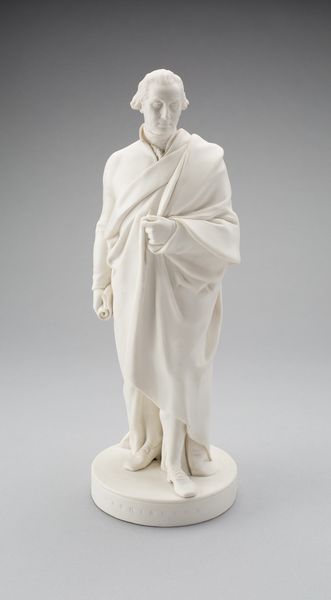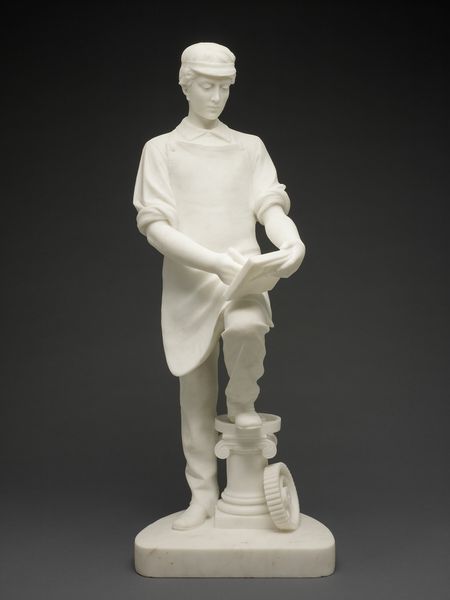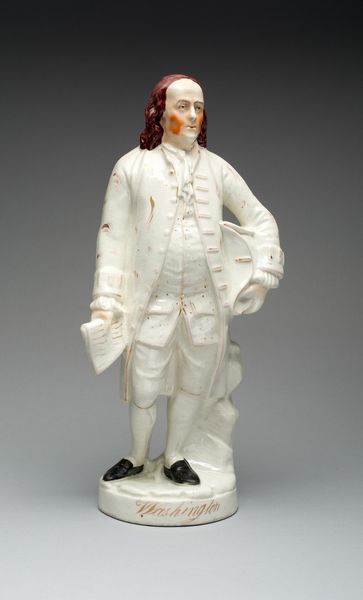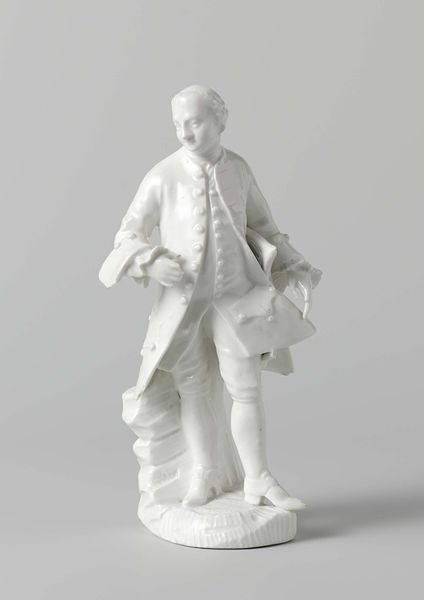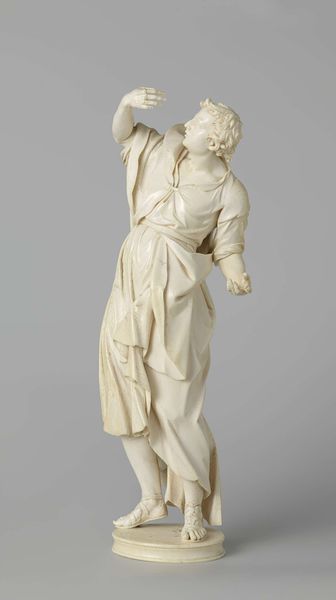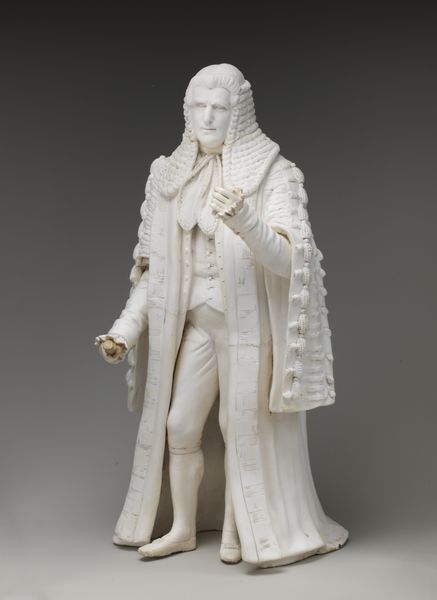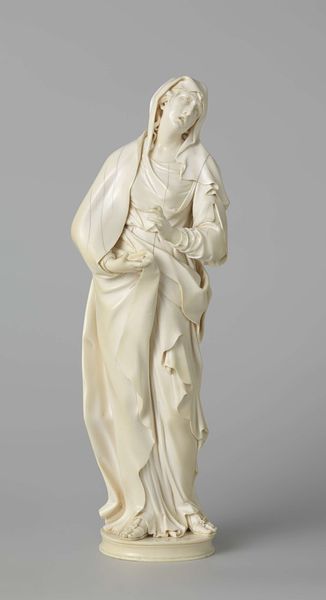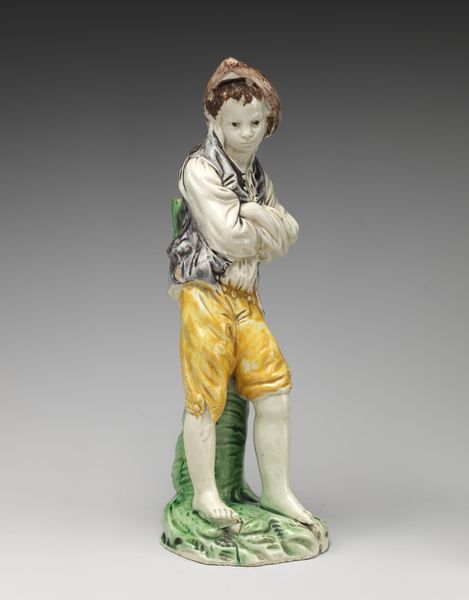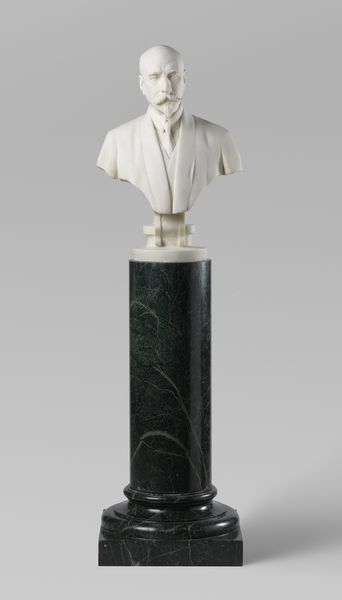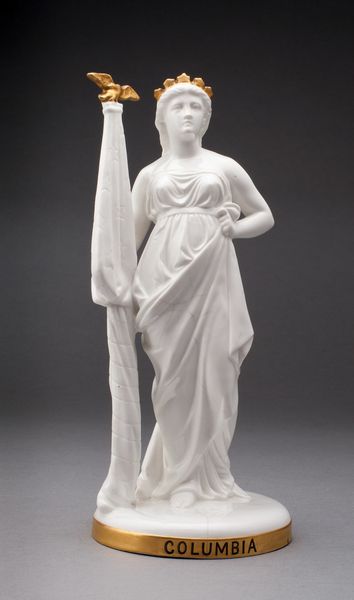
ceramic, porcelain, sculpture
#
portrait
#
neoclacissism
#
ceramic
#
classical-realism
#
porcelain
#
figuration
#
sculpture
#
decorative-art
Dimensions: 21.3 × 9.2 cm (8 3/8 × 3 5/8 in.)
Copyright: Public Domain
Editor: This is "George Washington," a porcelain sculpture from around 1800, and it’s at the Art Institute of Chicago. It’s striking how pristine and idealized it looks, like a flawless monument. What layers of meaning do you see in this depiction? Curator: It’s interesting to note the pure whiteness, almost godlike, reinforcing the then-contemporary ideal of the "founding fathers." Consider the context: a newly formed nation grappling with its identity, seeking legitimacy. Figures like Washington were consciously elevated to almost mythic status. How does this stark, almost sterile, representation engage with the complexities and contradictions inherent in the project of nation-building? Editor: It seems to smooth over the uncomfortable parts of history, focusing only on a heroic narrative. The porcelain seems deliberate. Curator: Exactly. Porcelain, a luxury material, was meant for display, for admiration. It speaks to the aspiration for a perfect image, intentionally obscuring the realities of slavery, dispossession of indigenous populations, and the inherent inequalities present at the nation's founding. It’s a performance of power. This begs the question: what stories get told, and more importantly, whose stories get erased in the process of creating these national icons? Editor: So, it's less about an accurate depiction and more about crafting a very specific image. Curator: Precisely. And, it’s our responsibility to unpack those constructed narratives, to confront the uncomfortable truths that these seemingly benign objects often conceal. Editor: I see it now. Thanks, I didn't consider the choices of the medium and their implications. Curator: Understanding these choices allows us to have a much more informed dialogue, pushing us to reconsider our own role in perpetuating and challenging dominant historical narratives.
Comments
No comments
Be the first to comment and join the conversation on the ultimate creative platform.
